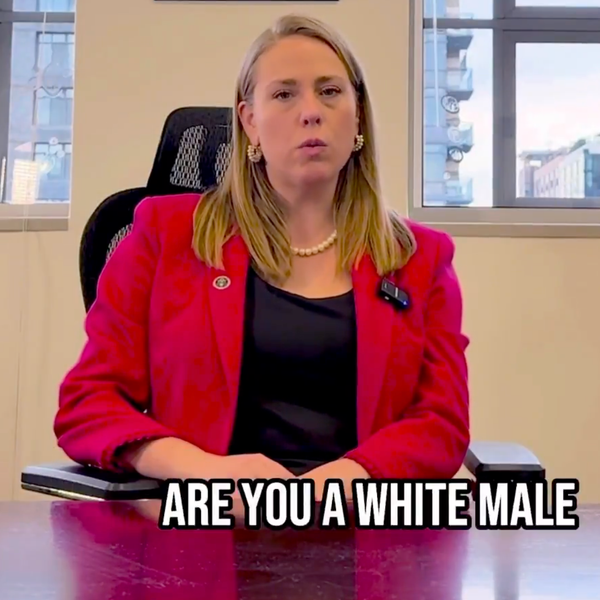The Time Is Right To Create A 21st Century Infrastructure Bank

President Obama has called for the creation of an infrastructure bank. Congress must follow his lead.
“It’s not a bigger government we need,” President Obama said in the State of the Union address, “but a smarter government that sets priorities and invests in broad-based growth.” The creation of a national infrastructure bank is a “smarter government” idea whose time has come.
Plans for a national infrastructure bank – one that uses federal funds to incentivize or leverage even greater investment, public and private, in large-scale public-purpose projects – have been percolating since the 1990s. President Obama has long been a champion, and the idea has enjoyed bipartisan support in Congress and backing from the likes of the AFL-CIO and U.S. Chamber of Commerce. Yet we remain stalled in enacting this kind of finance facility, despite the weight of evidence of its potential efficacy and the urgency of the infrastructure (and financing) need. It is time, as the president urged, to put the nation’s interest before party, and to use this kind of public-private partnership to make the investments vital to our economic prosperity.
Arguments in favor of the I-Bank are premised on simple logic. Investments in the infrastructure we require to remain economically competitive – improved roads and bridges, high-speed rail, a new power grid, universal broadband access, renewable energy – will also put people to work. “Smart” use of some of our public dollars via grants, loans, loan guarantees, and other risk-mitigating instruments can encourage or stimulate substantially greater investment in these projects by states, municipalities, and private sector actors. Senators John Kerry, Kay Bailey Hutchison, and Mark Warner estimated that their proposed $10 billion American Infrastructure Financing Authority could unleash an additional $640 billion in infrastructure spending over the course of a decade.
With all this win-win, what explains the delay in actually establishing such a bank? First, given current fiscal constraints, every dollar counts, and even a few budgetary billions that promise significant return on investment may not deliver those returns in this election cycle. Instead, many in Congress prefer to retain prerogative over what and where investments are made (preferably in their districts) rather than cede allocation decisions to an independent authority. Second, despite the endorsements from pro-business groups like the Chamber of Congress, a number of conservative Republicans have voiced predictable remonstrations: concerns over project selection process (“picking winners”), fear that the investment needs of metropolitan areas will be privileged over those of rural states, and a general (and congenital) preference for state-level decision making.
In fact, states have already taken the lead on creating infrastructure banks, as necessity has bred all kinds of invention. In the U.S., approximately 75 to 85 percent of infrastructure spending is financed by state and local governments, an unsustainable burden for states whose budgets and borrowing capacity have been eviscerated by the global financial crisis. According to the Federal Highway Administration, 32 states have infrastructure banks, and many new entities are taking shape, from Alaska to Virginia. Last year, the New York Works Task Force, headed by Felix Rohatyn (who helped save New York City from bankruptcy in the 1970s) called for the creation of a multibillion-dollar infrastructure bank for the Empire State.
In Chicago, Mayor Rahm Emanuel, who as President Obama’s chief of staff was actively involved in the White House push for a national infrastructure bank, has created the Chicago Infrastructure Trust (CIT), designed to spur private capital investment in a range of infrastructure projects, including transportation, alternative energy technologies, and telecommunications and broadband access. The CIT will be capitalized by the likes of Citibank and JP Morgan and will fund projects with both debt and equity. The first local I-Bank of its kind, the CIT lies at the heart of Chicago’s new economic growth strategy.
A national infrastructure bank could learn from these local experiments. Private sector investment is not a panacea; it only lends itself to projects that can generate sufficient revenue, often in the form of user fees, like tolls on roads, to attract commercial capital. Sometimes, particularly when municipalities sell off assets, there can be unintended consequences to privatization. In 2008, Chicago mayor Richard Daley famously leased the city’s parking meters to a private consortium for a handsome upfront fee of $1.15 billion. However, subsequent valuations of the future parking meter revenues put them at approximately $11.6 billion over 75 years – money that will accrue to the private investors, not to the city for things like education, libraries, or transportation.
A number of important new studies draw on these local experiments and best practices from around the world, including those of the European Investment Bank, which was established in 1958 and attracts a wide range of investors. Emilia Istrate and Robert Puentes note that 30 countries have specialized public-private partnership (PPP) units within their governments to promote this kind of cross-sector work. They suggest that, in addition to a national I-Bank, such an office could be housed within the Office of Management and Budget and could support state and local governments with their infrastructure investments. The idea is not to supplant or crowd out state or local investment efforts. As William Galston and Korin Davis point out, a national I-Bank would facilitate regional projects that span multiple states or those that promote goals that are truly national in scope, such as renewable energy development, a seamless power grid, or multimodal freight transport.
This would not be the first time we have looked to public-private partnership for massive infrastructure modernization and job creation. Franklin Delano Roosevelt’s New Deal included public-private ventures like the Tennessee Valley Authority, which FDR described as “a corporation clothed with the power of government but possessed of the flexibility and initiative of a private enterprise.” Obama’s New Deal – Keynes meets leveraged finance – would draw on this tradition of cross-sector collaboration with an eye toward our 21st century economic needs.
Calls for greater infrastructure investment have been amplified in recent months by events like Hurricane Sandy, which underscore the urgency – and often regional and national nature – of the need. Polls from Lazard and the Rockefeller Foundation, among others, show that the vast majority of Americans, despite valid privatization concerns, are supportive of a mix of infrastructure finance that includes private sector capital, particularly if it is in lieu of further budget cuts or tax increases. The president and Congress must seize the moment: the time is right for a significant public-private investment in our nation’s future.
Georgia Levenson Keohane is a Fellow at the Roosevelt Institute and the author of Social Entrepreneurship for the 21st Century: Innovation Across the Nonprofit, Private, and Public Sectors.
Cross-posted from the Roosevelt Institute’s Next New Deal Blog
The Roosevelt Institute is a non-profit organization devoted to carrying forward the legacy and values of Franklin and Eleanor Roosevelt.
Photo by Mats Molin/Flickr








